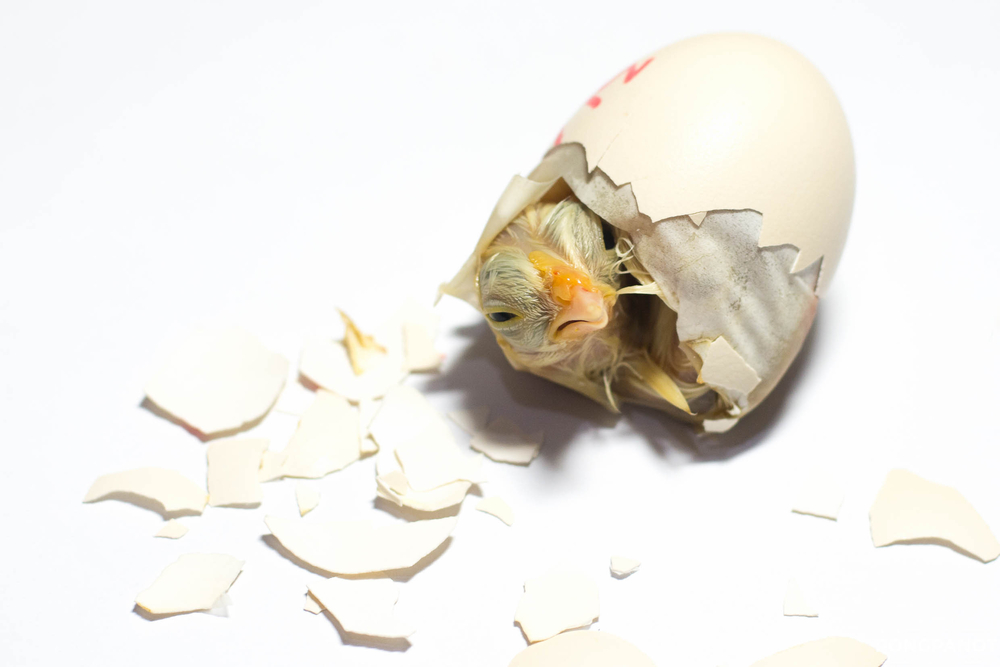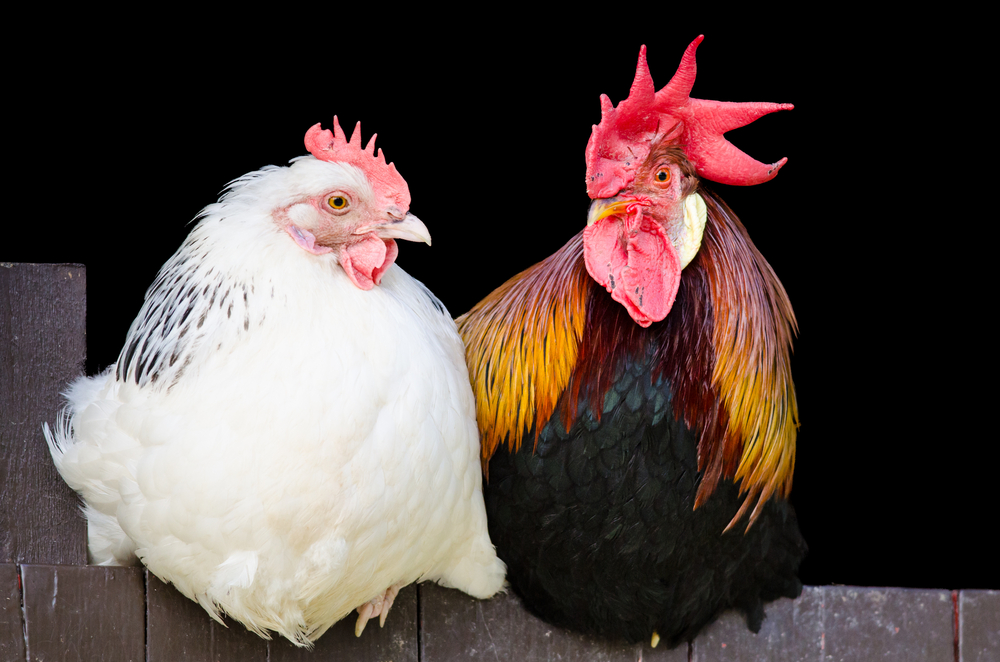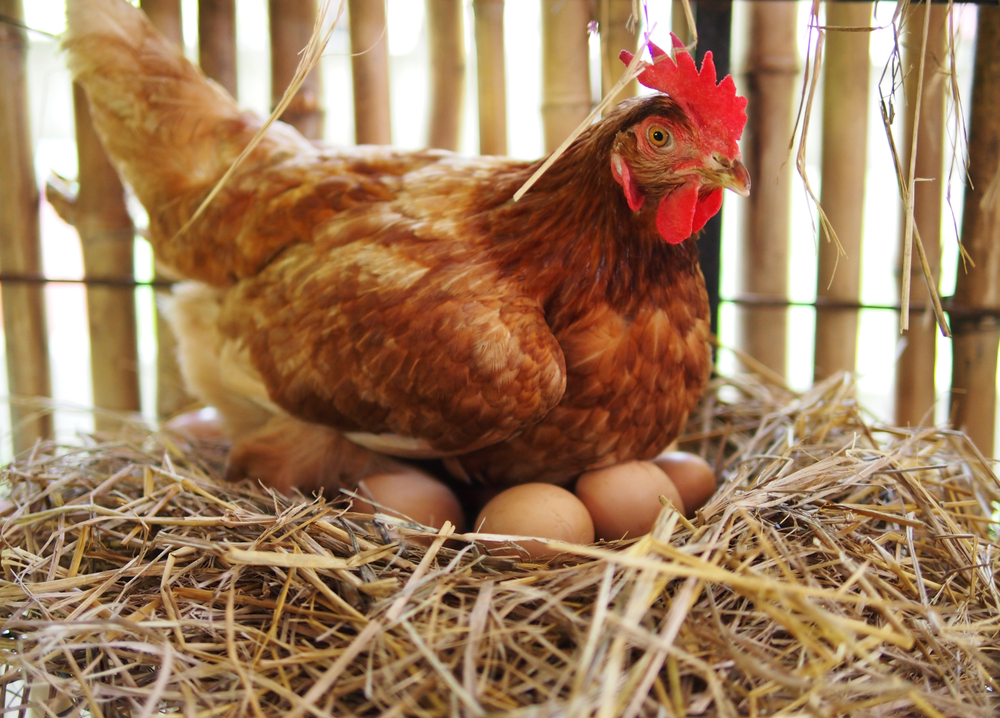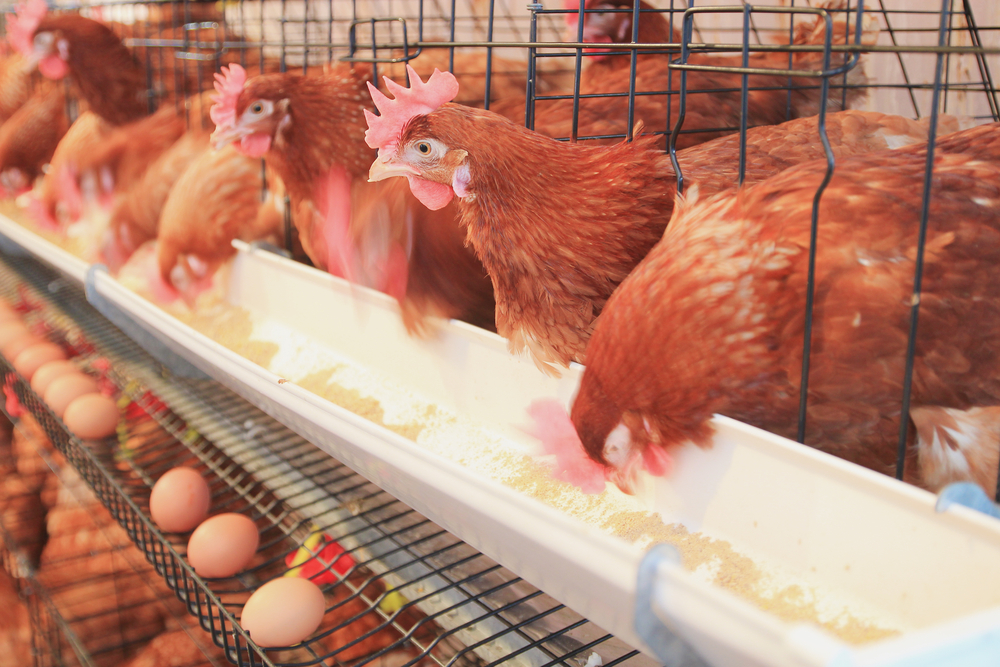Table of Contents (click to expand)
No, most chicken eggs that are sold commercially are unfertilized and can never hatch into tiny chicks.
Egg eaters have often panicked at the thought of cracking an egg open and finding a tiny chick inside. You have probably never been in such a situation, but is it possible?

We’ve all tried, at least once, to try to hatch a store-bought egg by keeping it warm. Can you blame us? However, almost all commercially sold eggs are not fertilized! This means that there is, in fact, no tiny chick embryo developing inside the egg.
Allow me to eggsplain a bit further…
The Biological Recipe Of An Egg
A chicken embryo’s life starts inside the hen even before an egg is laid. Eggs of various sizes and maturity levels are present in the hen’s ovary. Only the left ovary of hens (and all other female birds) is functional.

An egg is released from the left ovary in hopes that a rooster’s sperm will fertilize it. This occurs around 24 hours before the hen lays the eggs. If sperm from the rooster is present, the sperm fuses with the hen’s yolk cell to form an embryo. The hard shell develops over the yolk before the egg is laid.
Hens do not know if the egg is fertilized and must go through with the egg-laying process either way. A hen will sit on the egg day and night in hopes of hatching it. Such hens are called broody hens and they are so dedicated that they only leave their eggs once per day!

Interestingly, hens are capable of laying eggs without a rooster’s involvement! That’s right, an egg is produced by ‘laying hens’ in poultry farms once every 24 to 27 hours! All they require are the correct nutrients, namely calcium and vitamin D3 and the right physical conditions. Light stimulates the laying process, and some farms even use artificial lighting to regulate the process during winter months.
Even though there is no difference in the nutrient content or taste between a fertilized and an unfertilized egg, most commercial farms prefer to have only hens in their coops. This is because a single rooster can mate with 10 to 12 hens, and if proper care is not taken, the flock numbers can get out of hand very quickly!
Also Read: How Do Baby Birds Get Oxygen Inside Their Eggs?
Artificial Selection
In the wild, hens lay eggs until they form a clutch, a group of eggs that are hatched together. The clutch size differs from bird to bird. Hens usually have a clutch size of around a dozen eggs, after which the hen stops laying more eggs. Female fowl also stop releasing eggs in the harsh winter months, as it is difficult to raise offspring when food is in short supply. The shortened daylight hours also hamper egg production.
This brings down the total egg production of wild hens, since they only lay in the spring. The Red Jungle Fowl variety lays only 10-15 eggs per year. It is important to note that most of these eggs will be fertilized, since roosters and hens are almost always found together in the wild. Therefore, most eggs will hatch into chicks after 21 days of incubation. On the contrary, hens that are specially bred for egg-laying generate around 300 unfertilized eggs every year!

However, doesn’t the process of laying unfertilized eggs seem futile? Natural selection is supposed to favor reproductive fitness. This means that the evolutionary principle of ‘survival of the fittest’ assures the survival of the species with high reproductive success. A basket full of unfertilized eggs does not scream “reproductive success”, so how have hens survived natural selection?
The answer is that they haven’t! Over thousands of years, humans have selected those species of hens that produced more eggs. This is called selective breeding, ‘Human-caused evolution’, or artificial selection.
Through selective breeding, humans select only those individuals of a species that possess advantageous traits for mating, which reinforces these traits in the offspring. This occurs due to genetic mutations that arise through the selection pressure induced by humans.
Laying hens have been modified over time to guarantee yield consistency and peak egg production. Broiler chickens, on the other hand, have been engineered for the purpose of meat consumption and are therefore very fleshy and full. Compared to their cousins, laying hens have little flesh and concentrate all their energy on producing an egg each day. This shows how humans have artificially selected traits to optimize different species of chickens for different purposes.
The discrepancy between the number of eggs produced by wild hens and farm hens also occurs because farmers collect eggs every day. This prevents the hen from forming a clutch, so she continues to lay one egg daily.
Another reason is that over several years, humans have slowly modified hens to prevent their bodies from not laying eggs in the winter. Poultry farms use artificial light in the winter to continue egg production, although a few traditional breeds do still go ‘off-lay’ in the winter.
All of the above reasons have led laying hens to produce an unnaturally huge number of eggs. The deliberate exclusion of roosters on poultry farms is the sole reason why these eggs are unfertilized.
Also Read: Chicken Or The Egg? Decoding The Dilemma With Evolutionary Science
Is My Egg Actually An Embryo?
If you are still curious to know whether the egg you just cracked is fertilized or not, here’s how you can tell. A 24-hour-old fertilized egg will have a small white spot on the yellow yolk. As the chick, if there is one, develops, you’ll notice blood vessels forming around a comma-shaped fetus chick.
That being said, blood doesn’t indicate an embryo. A blood spot within an egg can be due to a rupture in a blood vessel. This can happen at any point in the reproductive system as the result of a deficiency in vitamin A.
Now, is there a chance that a fertilized egg might end up in the dozen eggs you bought? Even if we consider the off-chance of a fertilized egg being sold for consumption, there is no possibility of consuming a developing fetus, because all commercially sold eggs are refrigerated prior to sale, which halts the development of the embryo, if one is present.
Additionally, food safety measures dictate the inspecting of the interior of eggs meant for sale. This is achieved by a process called candling in which a bright light is held against the shell. Candling highlights any anomalies, including developing chicks.

In shot, you can keep all your worries at bay and eat your breakfast sunny-side up with a smile on your face!
How well do you understand the article above!

References (click to expand)
- Why did evolution create a chicken that lays so many .... West Texas A&M University
- Can you hatch an egg bought from the store?. Michigan State University
- Chick Embryo Development. Virginia Tech
- Live Chicken Embryos | Exploratorium Museum Exhibits. The Exploratorium
- Decreasing daylight and its effect on laying hens - Poultry. Michigan State University
- About Chickens - The Humane Society of the United States. The Humane Society of the United States
- How many eggs a day does a hen lay, and how?. H Hen Welfare Trust
